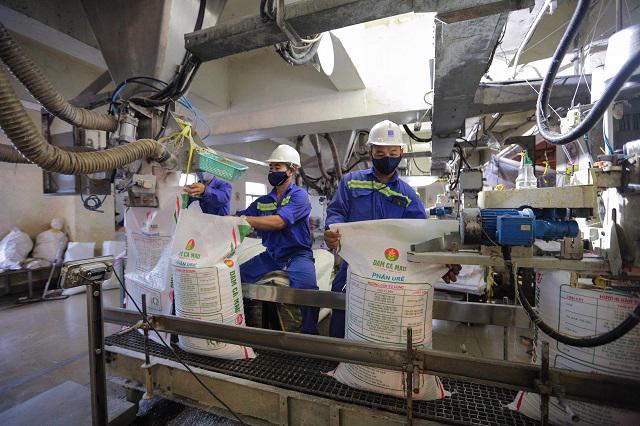Vietnam targets to have 10 SOEs with over US$5-billion market cap by 2025
All state firms should further shift their investment activities towards using green technology with lower carbon emission levels.
The Vietnamese Government sets a target of having at least 10 state-owned enterprises (SOEs) with a market capitalization of over US$5 billion and around 25 with around $1 billion in the next five years.
| Production at Ca Mau Fertilizer Plant. Photo: Hoang Anh |
The goal was set in a Government resolution No.68 signed by Deputy Prime Minister Le Minh Khai on enhancing efficiency in the management of state resources at SOEs.
For the next five years, major state corporations are expected to increase their contribution to the state budget by 5-10% compared to the 2016-2020 period.
“All state firms should further shift their investment activities towards projects using green technology with lower carbon emission levels,” it noted.
Under the resolution, the Government urged ministries and agencies to continue channeling SOEs’ resources into economic development, in which state firms would be handed several key projects in priority fields, such as renewables, semiconductors, transport infrastructure, or digital infrastructure.
The resolution also stressed the necessity for SOEs to strengthen the linkage between each other and the private sector to carry out large-scale projects, aiming at developing value chains in each sector and industry.
Meanwhile, the Government’s investment arm, the State Capital Investment Corporation (SCIC,) has been tasked with stepping up efforts as a state investor to carry out major projects with high spillover effects for economic growth.
In this regard, the Government emphasized the view that SOEs refrain from unfocused investments and concentrate on their core business activities.
“SOEs are responsible for optimizing resources in terms of capital, land, and business model to enhance productivity and competitiveness,” it concluded.
Statistics from the Ministry of Finance revealed the number of SOEs currently make up 0.08% of total operational companies, estimated at nearly 700,000, but make up only 7% of total assets and 10% of equity. State-owned corporations also account for 26% of total working capital and 23% of fixed asset value. In 2020, companies wholly owned by the state paid nearly VND242 trillion ($10.48 billion) in tax. There are 49 SOEs with a market capitalization of over $1 billion being listed in the Ho Chi Minh Stock Exchange (HoSE), home to the majority of large-caps, including some with stakes being owned by the Government, such as Vietcombank, BIDV, Vietinbank, Sabeco, or Viglacera. |











